Wave Scattering through Step Down Cascading Junctions
Abstract
:1. Introduction
2. Geometry of Cascaded-Down Junctions
- In addition, radiation conditions would also be applied. We divide this infinite duct into three regions as discussed below.
3. Solution of Regions Separately
3.1. Region 1:
3.2. Region 2:
3.3. Region 3:
4. Formulation of System of Equations
4.1. Continuity of Pressures
4.2. Continuity of the Velocities of the Potential
5. Graphical Results and Discussion
6. Conservation of Energy
7. Summary
Author Contributions
Funding
Data Availability Statement
Conflicts of Interest
References
- Linton, C.M.; McIver, P. Handbook of Mathematical Techniques for Wave/Structure Interactions; CRC Press LLC.: Boca Raton, FL, USA, 2001. [Google Scholar]
- Meylan, M.H.; Ul Hassan, M.; Bashir, A. Extraordinary acoustic transmission, symmetry, blaschke products and resonators. Wave Motion 2017, 74, 105–123. [Google Scholar] [CrossRef]
- Latha, C.; Payel, M. Mode matching method for the analysis of cascaded discontinuities in a rectangular Wave guide. Procedia Comput. Sci. 2016, 93, 251–258. [Google Scholar] [CrossRef]
- Ma, C.; Niu, P.; An, X. The estimation of trapped modes in a cavity–duct wave-guide based on the coupling of acoustic and flow fields. Appl. Sci. 2023, 13, 1489. [Google Scholar] [CrossRef]
- Dai, X. Total reflection of two guided waves for embedded trapped modes. AIAA 2020, 53, 131–139. [Google Scholar] [CrossRef]
- Burhan, T. Sound wave diffraction by a cavity with partial lining. Math. Sci. Appl. 2020, 8, 123–133. [Google Scholar]
- Rawlins, A.D. A bifurcated circular wave-guide problem. IMA J. Appl. Math. 1995, 54, 59–81. [Google Scholar] [CrossRef]
- Wu, K.L.; Wang, H. A rigorous modal analysis of H-plane wave guide T-junction loaded with a partial-height post for wide-band applications. IEEE Trans. Microw. Theory Tech. 2001, 49, 893–901. [Google Scholar] [CrossRef]
- Ul Hassan, M. Wave scattering by soft-hard three spaced wave guide. Appl. Math. Model. 2014, 39, 4528–4537. [Google Scholar] [CrossRef]
- Nawaz, T.; Afzal, M.; Nawaz, R. The scattering analysis of trifurcated waveguide involving structural discontinuities. Adv. Mech. Eng. 2019, 11, 1–10. [Google Scholar] [CrossRef]
- Ul-Hassan, M.; Rawlins, A.D. Sound radiation in a planar trifurcated-lined duct. Wave Motion 1998, 29, 157–174. [Google Scholar] [CrossRef]
- Dusséaux, R.; Chambelin, P.; Faure, C. Analysis of rectangular wave guide h-plane junctions in nonorthogonal coordinate system. PIER 2000, 28, 205–229. [Google Scholar] [CrossRef]
- Jiang, Z.; Shen, Z.; Shan, X. Mode matching analysis of wave-guide T-Junction loaded with an H-Plane dielectric slab. PIER 2002, 36, 319–335. [Google Scholar] [CrossRef]
- Kuehn, E. A mode matching method for solving field problems in wave guide and resonator circuits. Int. J. Electron. Commun. 1973, 27, 511–518. [Google Scholar]

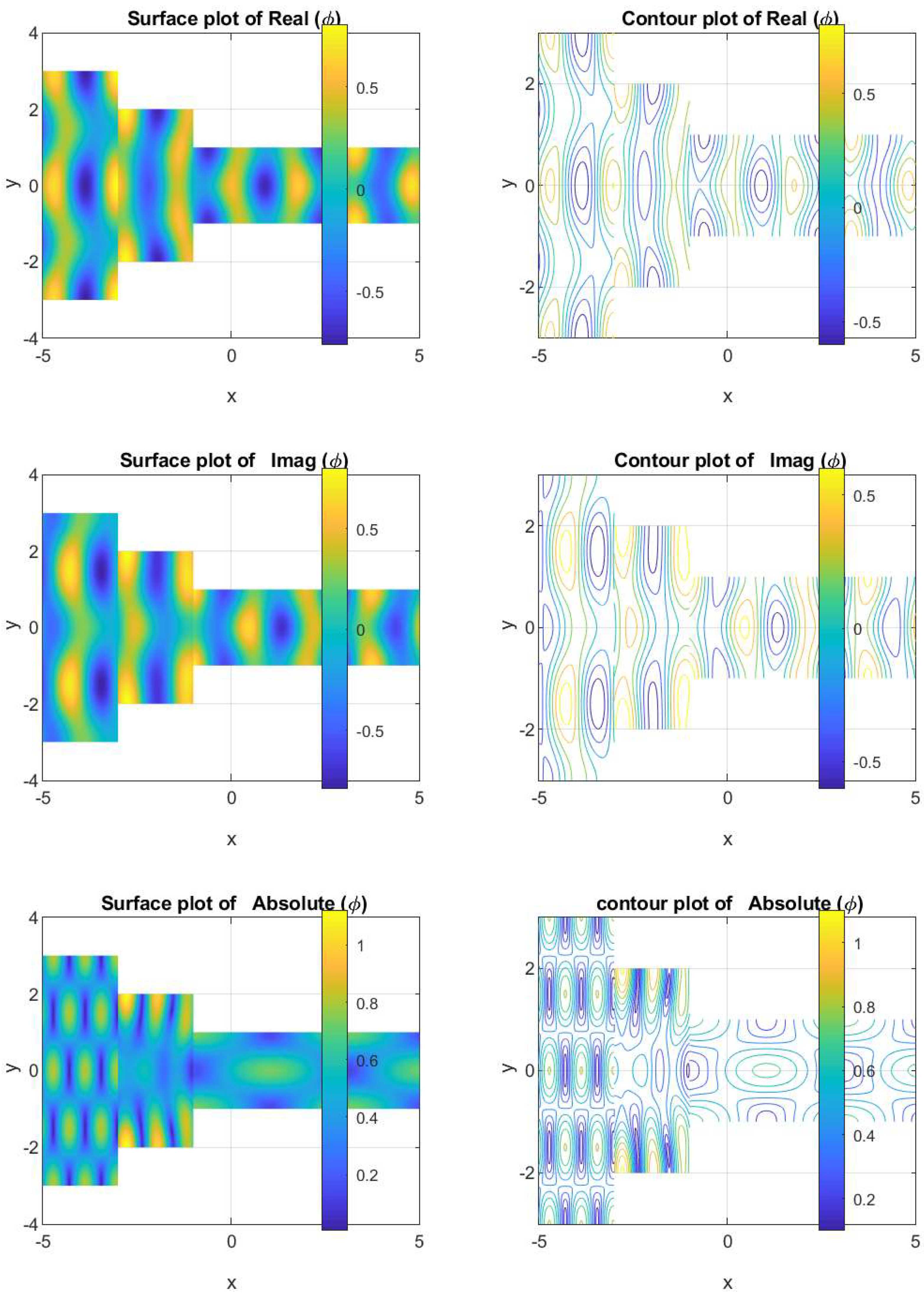


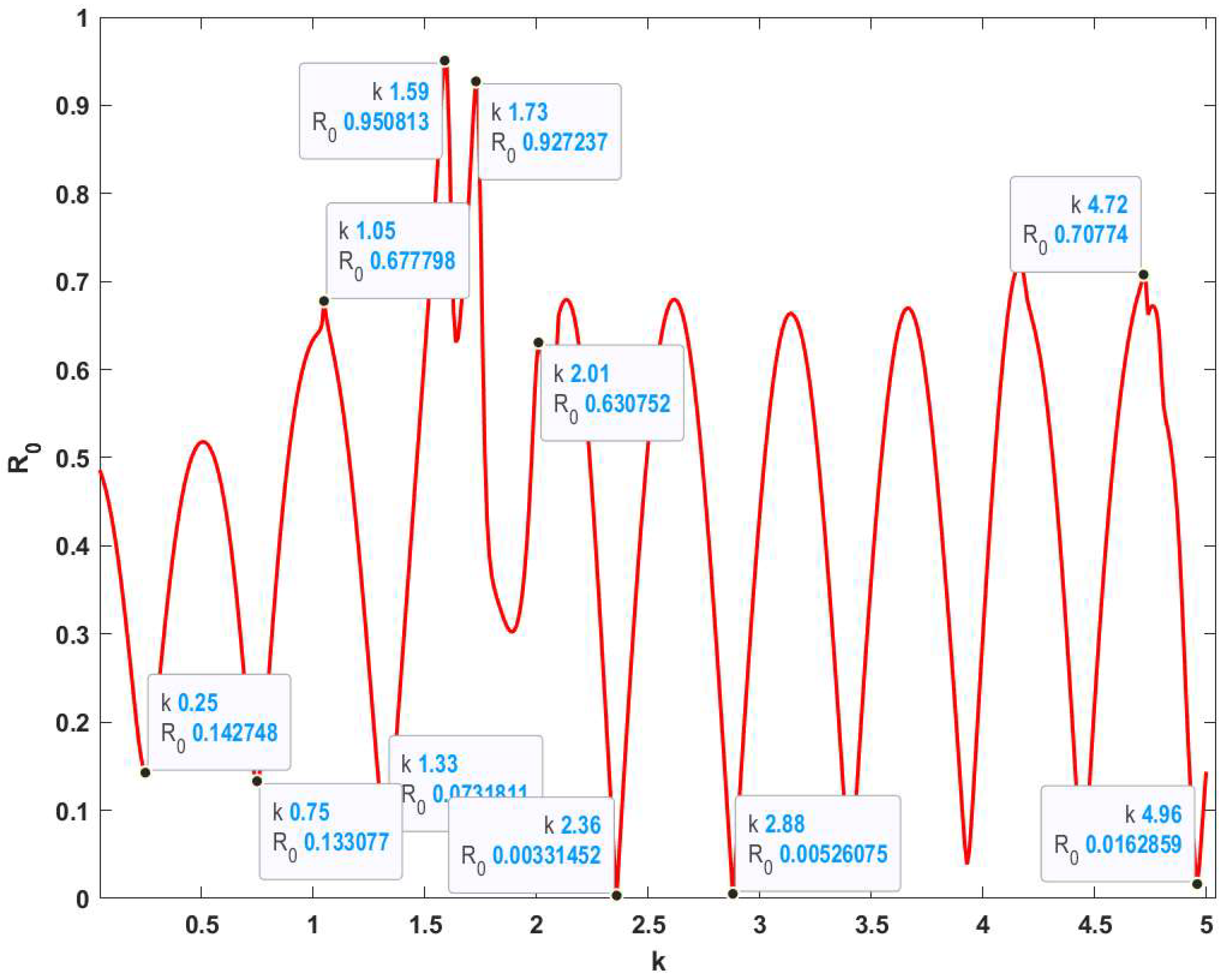
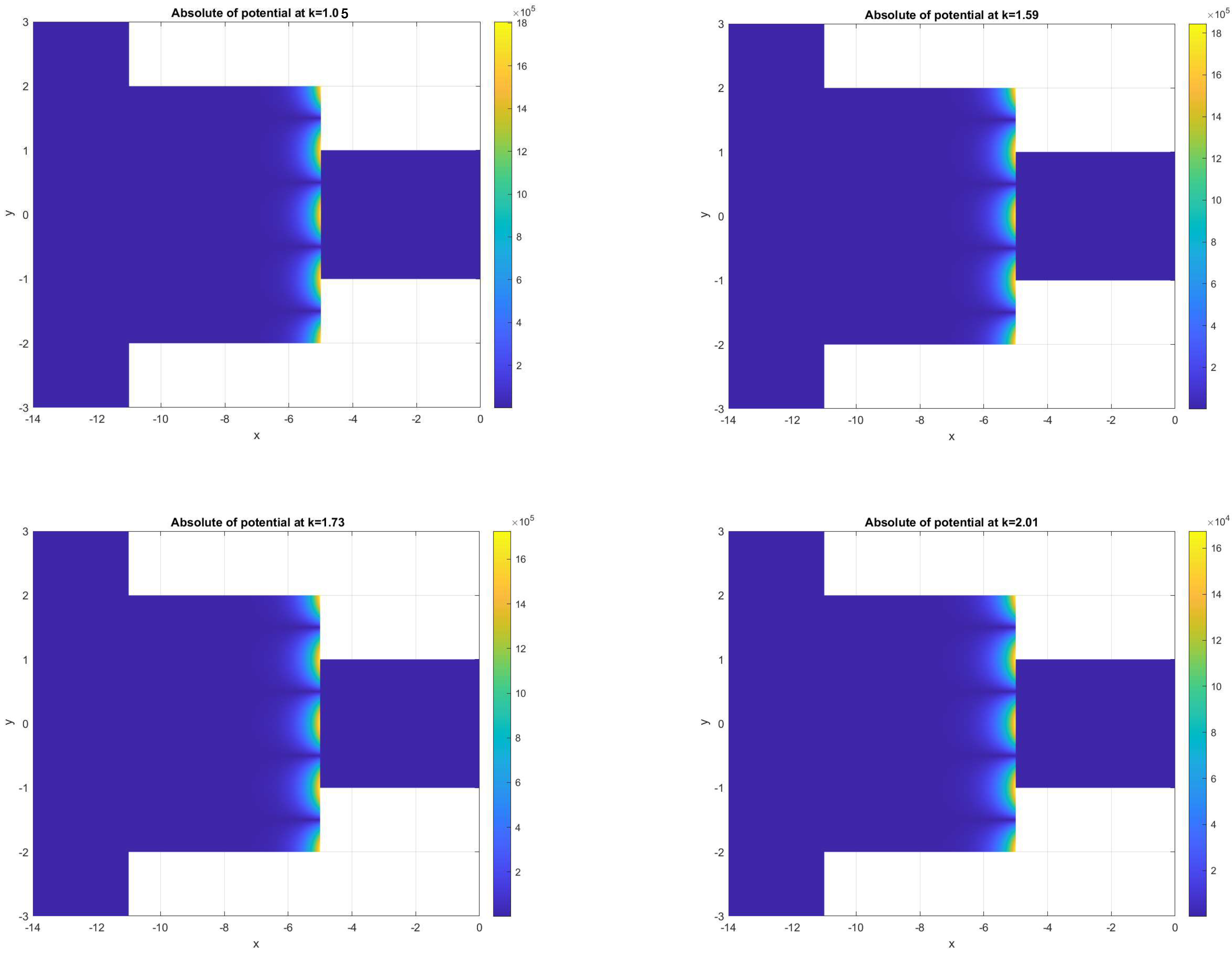
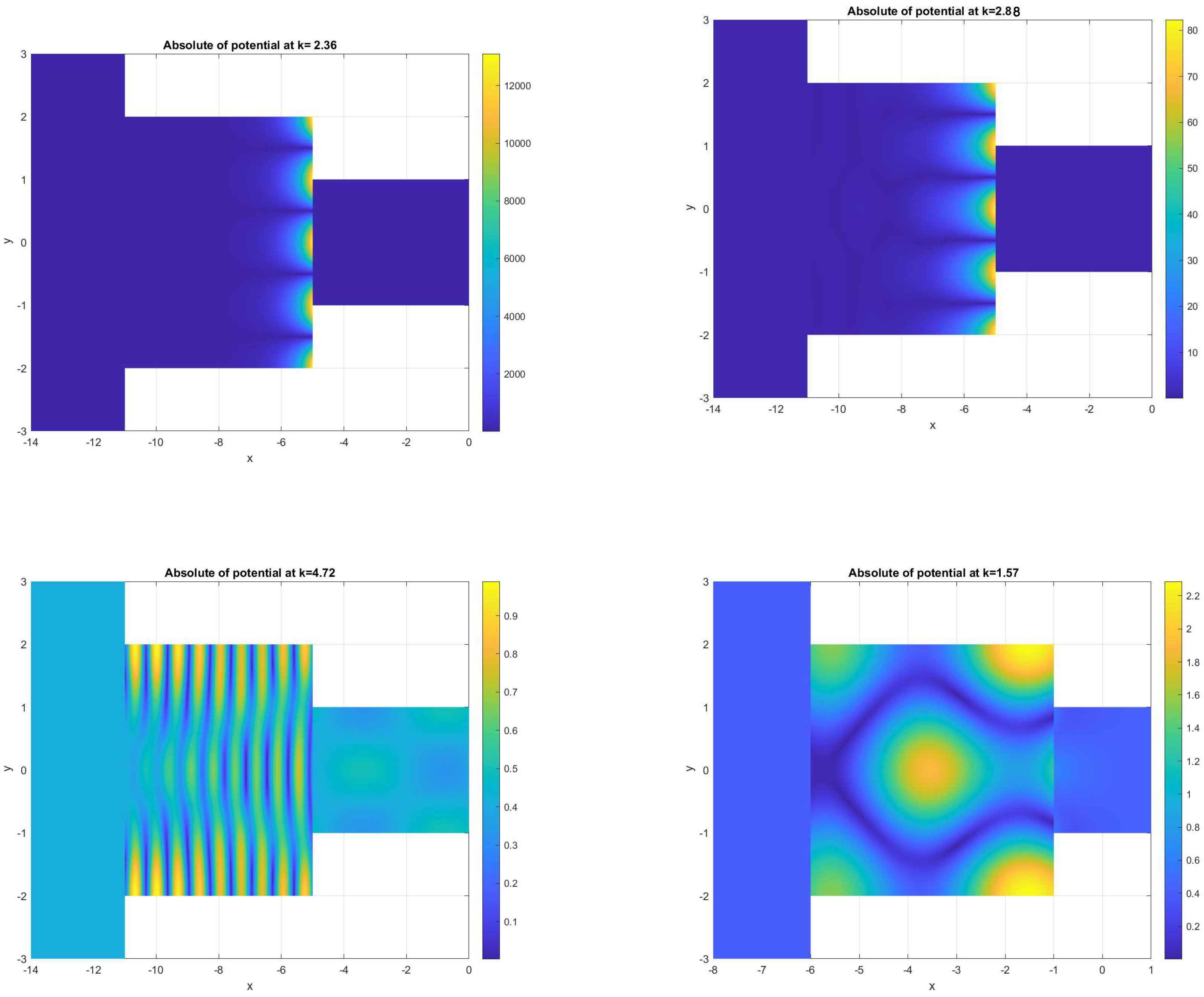
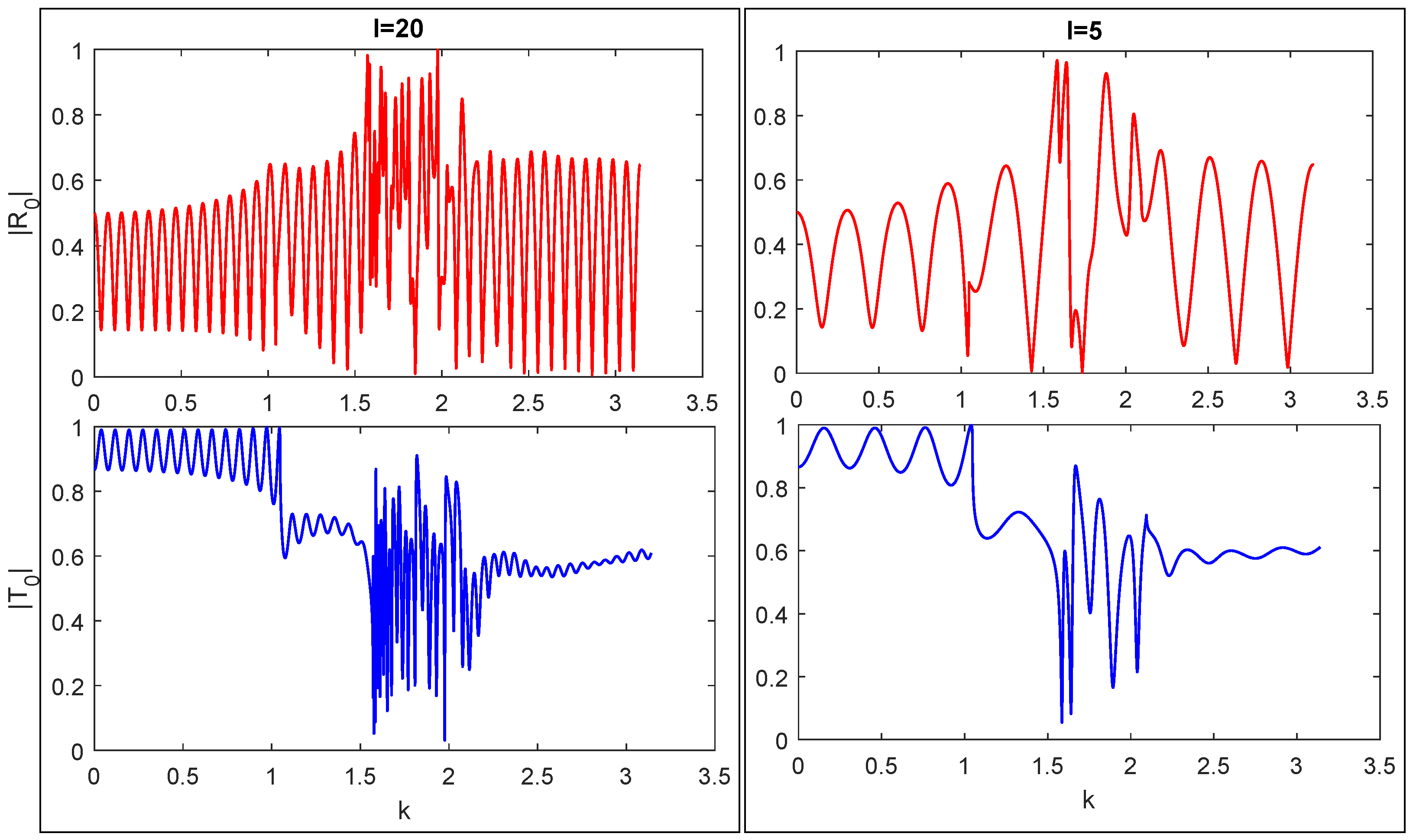
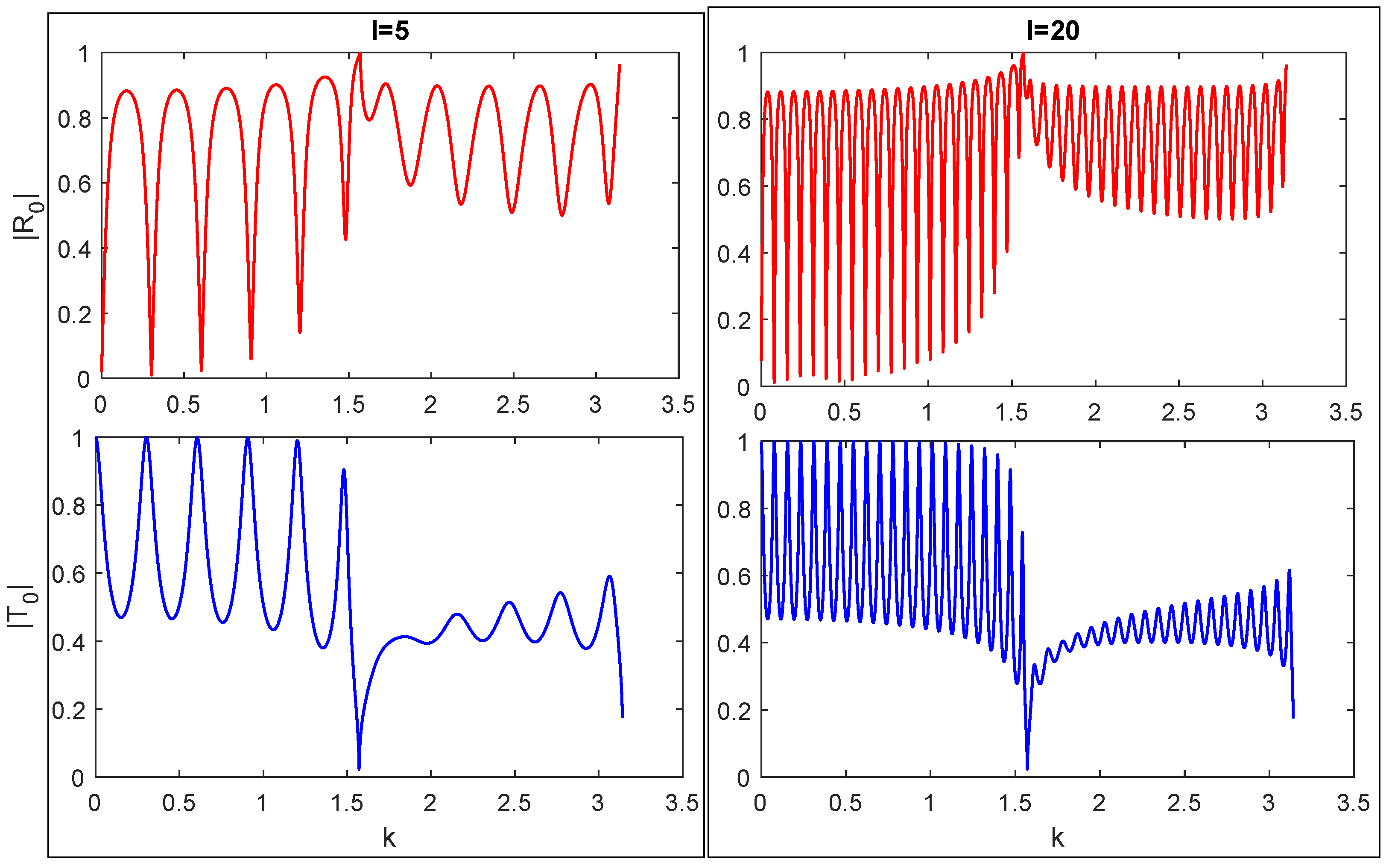
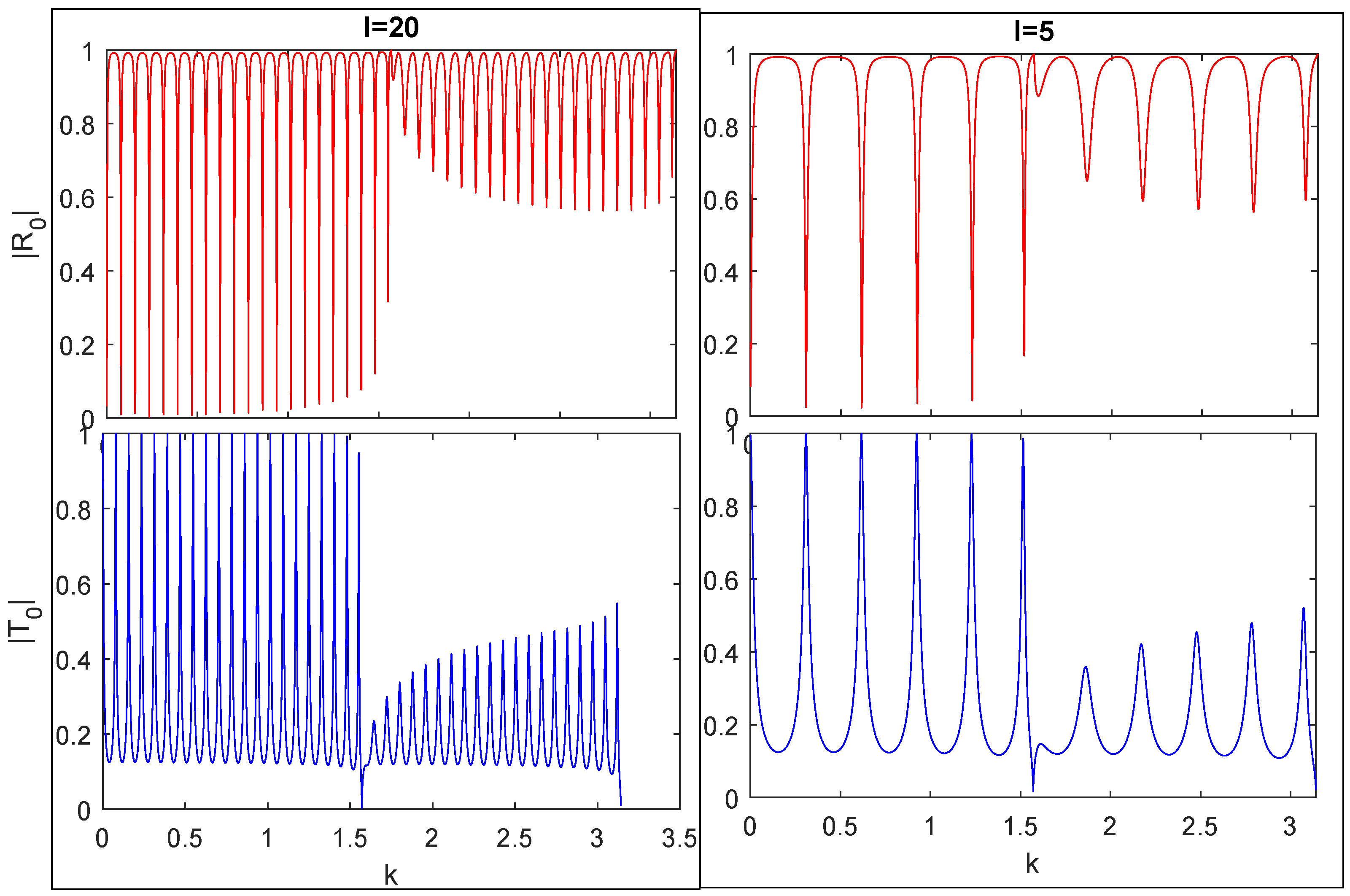

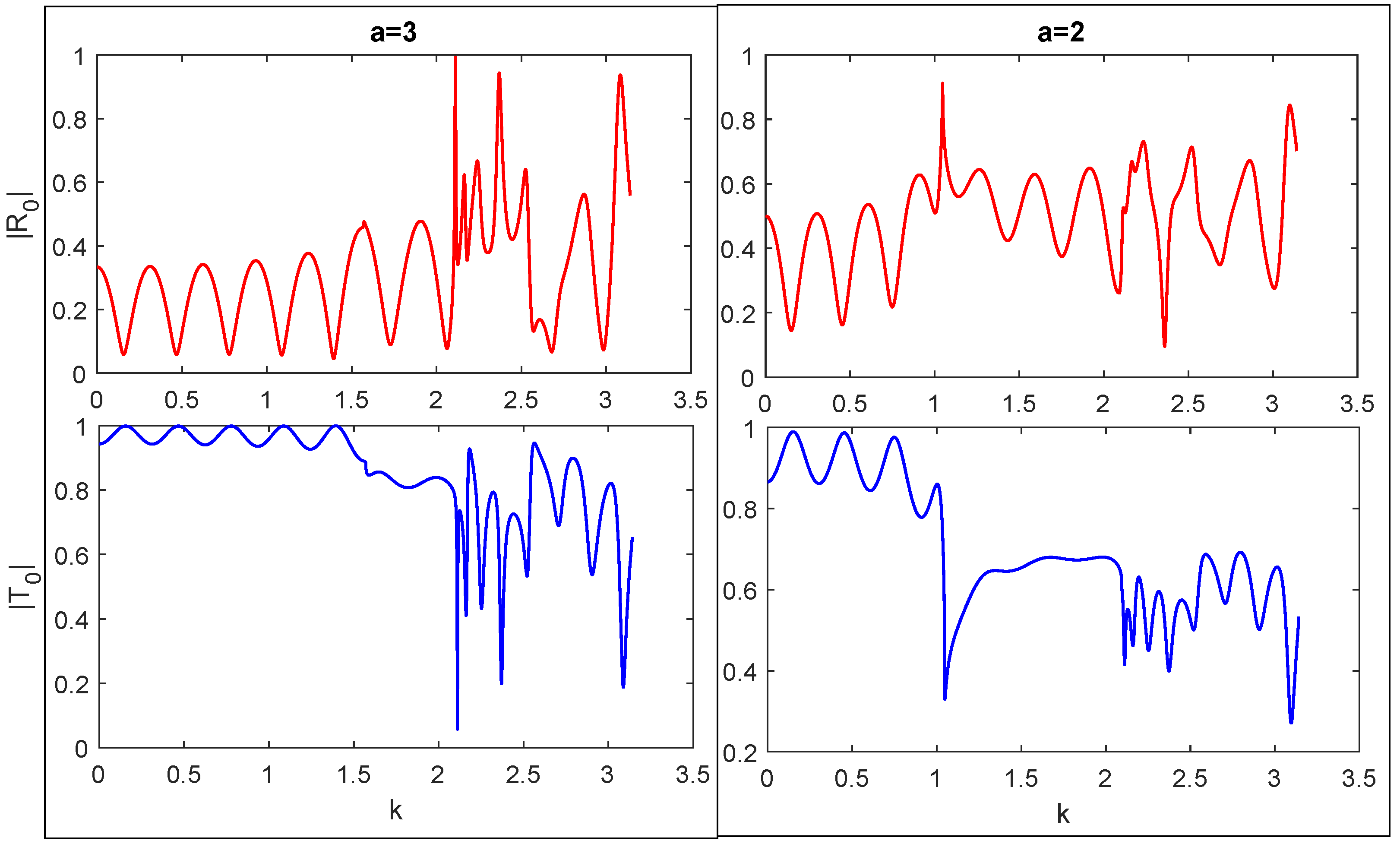
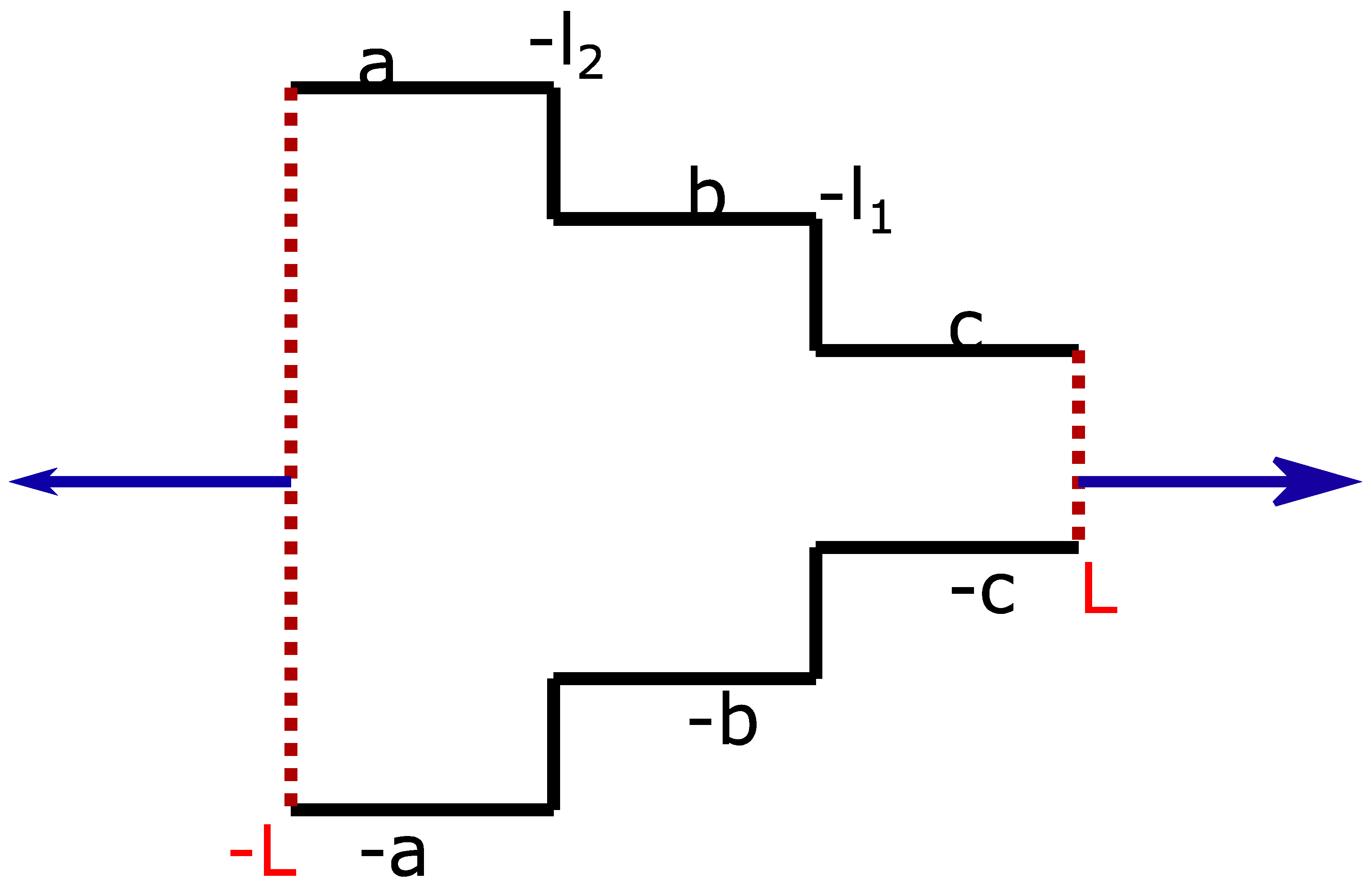
Disclaimer/Publisher’s Note: The statements, opinions and data contained in all publications are solely those of the individual author(s) and contributor(s) and not of MDPI and/or the editor(s). MDPI and/or the editor(s) disclaim responsibility for any injury to people or property resulting from any ideas, methods, instructions or products referred to in the content. |
© 2023 by the authors. Licensee MDPI, Basel, Switzerland. This article is an open access article distributed under the terms and conditions of the Creative Commons Attribution (CC BY) license (https://creativecommons.org/licenses/by/4.0/).
Share and Cite
Ali, H.; Mahmood-ul-Hassan; Akgül, A.; Alshomrani, A.S. Wave Scattering through Step Down Cascading Junctions. Mathematics 2023, 11, 2027. https://doi.org/10.3390/math11092027
Ali H, Mahmood-ul-Hassan, Akgül A, Alshomrani AS. Wave Scattering through Step Down Cascading Junctions. Mathematics. 2023; 11(9):2027. https://doi.org/10.3390/math11092027
Chicago/Turabian StyleAli, Hadia, Mahmood-ul-Hassan, Ali Akgül, and Ali Saleh Alshomrani. 2023. "Wave Scattering through Step Down Cascading Junctions" Mathematics 11, no. 9: 2027. https://doi.org/10.3390/math11092027




